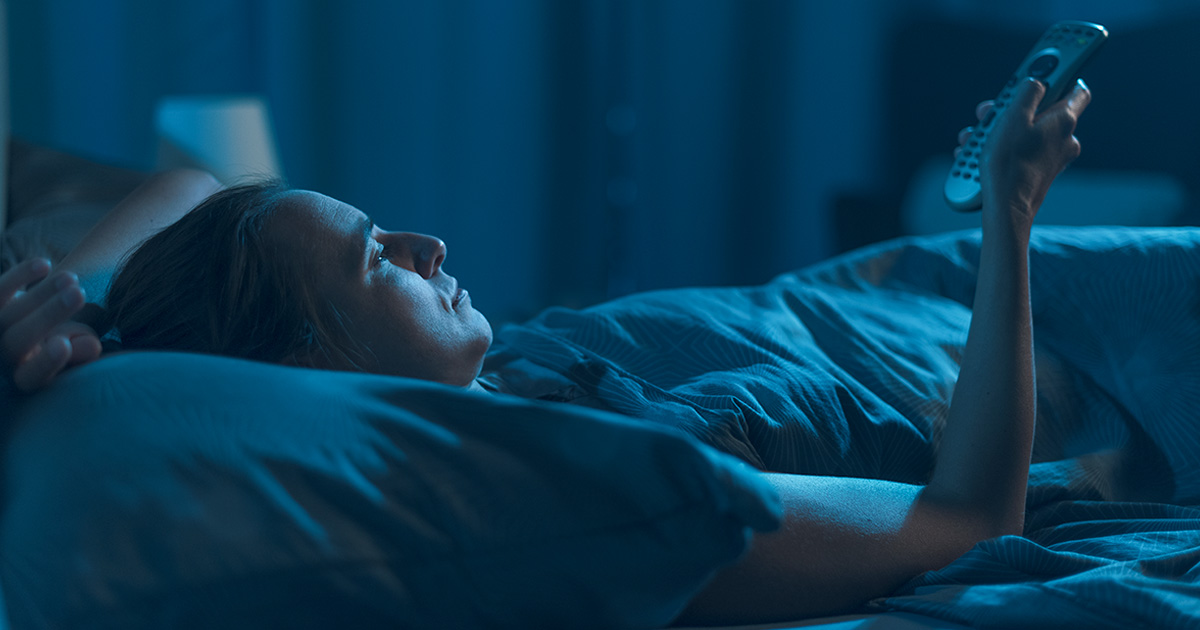The blue light
The media, social networks and advertising constantly warn us that we spend too much time in front of our screens, to the detriment in particular of our vision. They urge us to use filters to block out the blue light from screens in order to improve our rest, reduce eye fatigue and prevent eye disease. To what extent are these claims true and sustainable?
Understanding blue light
Blue light is the range of the visible light spectrum with wavelengths between 380 and 450 nanometres. Naturally emitted by the sun, which also contains other forms of light invisible to the human eye, such as ultraviolet and infrared rays, it is essential for our health, as it helps to regulate our circadian rhythm.
Its presence in our environment is increasing exponentially due to the growing use of all kinds of work tools with screens, such as computer screens, laptops, smartphones, televisions and even more so the new LED lighting systems, which also emit artificial blue light.
We are therefore exposed to this potentially harmful blue light for long periods, even late at night.
|
Definition: The circadian rhythm is our internal biological clock, representing the physiological change between wakefulness and sleep. This circadian clock controls the cyclical variations in many of our body’s functions, such as blood pressure, hormone production, cognitive capacity, mood, body temperature, digestion and sleep. It influences the different phases of sleep and is constantly synchronised with the alternation between day and night. |

Blue light has many facets. Not only is it emitted by natural sunlight and the artificial light sources described above, but to weigh up and assess the risk of exposure, we need to differentiate between:
- Turquoise-blue light (455-495 nm), which is essential to the body as it helps regulate our circadian rhythm and has a positive influence on our well-being and mood ;
- Blue-violet light (415-455 nm) can be potentially dangerous because, being highly energetic (High-energy visible light = HEV), it can accelerate the ageing of the retina and contribute to macular degeneration (AMD).
What impact can blue light have on our health?
Clearly, we are increasingly exposed to light sources using the new LED technology. Thanks to their technical qualities, LEDs can considerably reduce energy consumption, they don’t heat up, they don’t contain toxic products such as mercury, unlike compact fluorescent bulbs, the energy consumed is devoted exclusively to lighting, as well as having a much longer lifespan.
Sleep
As mentioned above, blue light is one of the factors that help regulate our central biological clock, the circadian cycle. When light reaches our retina, it interacts with photoreceptors (cone and rod cells, enabling color and night vision) and other light-sensitive cells - such as certain ganglion cells, which regulate this circadian cycle. Blue light interferes with the latter’s secretion of melatonin, the sleep hormone that helps us fall asleep. As a result, if we expose ourselves to blue light as we prepare for sleep, we alter melatonin secretion, leading to a desynchronization of sleep cycles.

Eye fatigue
What we commonly call "eye fatigue" is not directly linked to the emission of blue light. It’s a combination of discomfort and irritation caused by the dryness that occurs when our eyes are left open for too long. This dryness, as well as any focusing problems that may occur, results in slightly blurred vision.
To avoid them, we need to increase the frequency of our eyelid blinks to renew and distribute the tear film that moisturizes and nourishes the ocular surface. It’s also important to take breaks during which we engage in activities that don’t require continuous visual attention, and which also allow us to change our focusing distance by looking into the distance. Finally, we need to ensure that the climate, lighting and our position in front of the screen are appropriate.
Duration and intensity of exposure
Traditional LCD (liquid crystal display) screens, illuminated by diodes, pose few problems. Light passes through the liquid crystal slab and is not transmitted directly to the user. They work by backlighting.

On the other hand, new computer screens, ultra-thin TVs, tablets and smartphones are equipped with OLED or AMOLED technologies, which use this innovative, low-energy and cost-effective process whose light radiation covers a significant range of the light spectrum and therefore also emits blue light. Each diode is located on the surface of the screen. The blue-rich light emitted by these screens is therefore no longer deflected and can therefore hit the retina or generate glare.
However, these devices often feature functions to reduce the brightness level according to the time of day, or even transform the light they emit in the evening into a yellowish tint. In this way, the intensity of the light hitting our retina is reduced.
Under these conditions, and given current scientific data, there is no risk to the retina from these devices.
As a precautionary measure, however, it is advisable to reduce the duration of exposure as much as possible.
|
Oled : when pixels light up themselves Amoled : the benefits of the active matrix |

How can I protect myself?
Advice:
- Distance yourself from the screen;
- Alternate between on-screen and off-screen tasks;
- Activate the screen’s blue filter;
- Limit screen time, especially from dusk onwards;
- Stop looking at the screen at least one hour before bedtime;
- Avoid working in a dark environment (pupil dilation);
- Work in a healthy climatic environment (appropriate air humidity).
